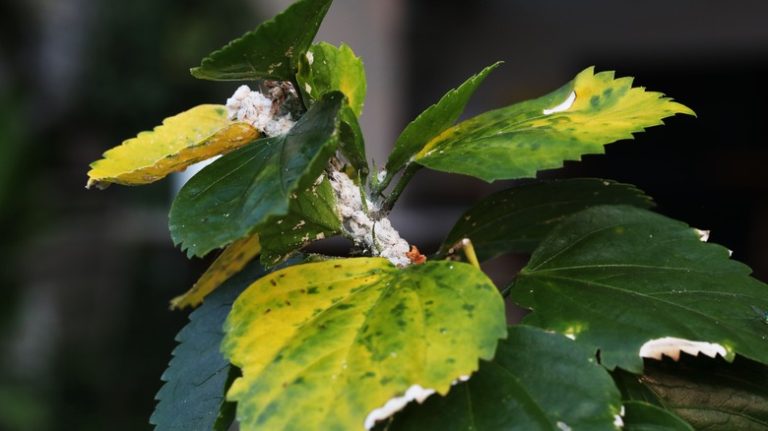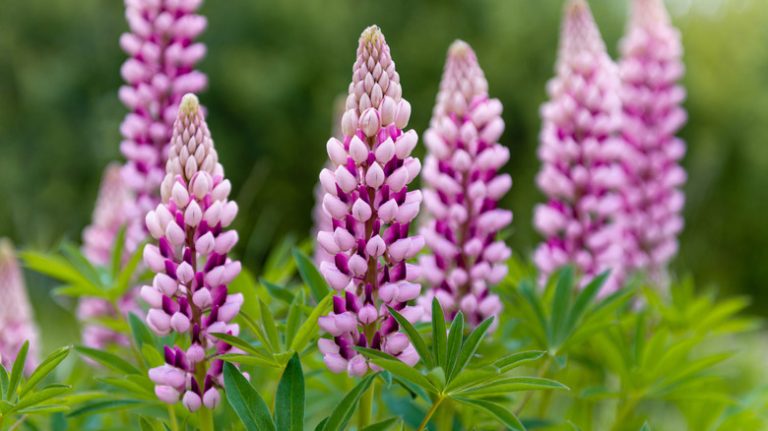If you are a fan of colorful and tall flowers, then hollyhocks will definitely catch your fancy. Hollyhocks, scientifically known as alcea, are known for their beautiful blooms that can reach up to 12 feet in height. They are a favorite in cottage gardens and are often planted in the back of the flower bed as they can tower over other plants. Hollyhocks are biennial plants, meaning they have a two-year life cycle. They are planted in the first year and bloom in the second year.
Alternatively, hollyhocks can be treated as short-lived perennials. By deadheading the spent flowers, they can be encouraged to bloom again within the same year. Hollyhocks thrive in full sun, but can also tolerate light shade. They prefer well-drained soil and do not do well in heavy clay. It is important to take care when planting hollyhocks, as they are very susceptible to pests such as aphids and rust. If planted too close together, they can also be prone to powdery mildew.
One of the unique qualities of hollyhocks is their ability to self-seed. Once the flowers have finished blooming, they will produce seed pods that can be collected and planted the following year. This means that hollyhocks will often come back year after year, making them a reliable and low-maintenance addition to your garden.
Caring for hollyhocks is relatively easy. They need regular watering, especially during dry spells, and benefit from a layer of mulch to help retain moisture in the soil. Hollyhocks also require staking, as their tall and heavy stems can easily be damaged by wind or heavy rain. By providing them with support, you can ensure that your hollyhocks will remain upright and not topple over.
When it comes to pests, hollyhocks have a few potential adversaries. Aphids, in particular, can be problematic for hollyhocks, as they can cause stunted growth and distorted foliage. To combat aphids, you can use organic insecticidal soaps or attract beneficial insects, such as ladybugs, to your garden. Hollyhocks are also toxic to dogs, so it is important to keep them out of reach of pets.
Hollyhocks are a popular choice among gardeners due to their beautiful flowers and tall stature. They come in a variety of colors, including white, pink, purple, and red. The flowers have a intricate ruffled appearance and are often likened to the blooms of the hibiscus plant. Hollyhocks can be grown from seed, but there are also many varieties available for purchase at garden centers.
In conclusion, hollyhocks are a stunning addition to any garden. With their tall stature and vibrant blooms, they are sure to make a statement. Whether you choose to grow them from seed or purchase established plants, hollyhocks will reward you with their beauty year after year. So, why not start growing hollyhocks in your garden this year and enjoy their gorgeous blooms?
Growing Hollyhocks: When, Where, and How to Plant Hollyhocks from Seed
Hollyhocks (Alcea) are beautiful and tall flowering plants that can add a touch of elegance to any garden. These plants are short-lived perennials or biennials, which means they typically live for two years or less. However, with proper care and maintenance, you can enjoy their stunning blooms year after year.
When it comes to planting hollyhocks from seed, timing is important. These plants prefer to be planted in early spring or late summer. If planted in spring, they will have ample time to establish before winter. If planted in late summer, they will start growing their foliage during fall and flower the following year.
Before planting hollyhocks, make sure you choose a location that receives plenty of sunlight. These plants thrive in full sun but can tolerate partial shade as well. Avoid planting them in areas that stay wet or are prone to flooding, as hollyhocks prefer well-drained soil.
To prepare the planting area, loosen the soil, remove any weeds or grass, and amend it with organic matter. This will improve drainage and provide essential nutrients to the plants. You can also add a balanced fertilizer to promote healthier growth.
- Start by solving the problem of when to plant hollyhocks.
- Choose a well-drained location that receives plenty of sunlight.
- Prepare the planting area by loosening the soil and adding organic matter.
- Sow the hollyhock seeds directly into the soil, about 1/4 inch deep.
- Water the seeds well and keep the soil consistently moist until they germinate.
- Once the hollyhock seeds have sprouted, thin them to about 18 inches apart to give each plant enough space to grow.
- As the plants grow, make sure to keep them well-watered, especially during dry periods.
- Deadhead the spent flowers to encourage more blooms and prevent self-seeding.
- In colder regions, cover the base of the plants with mulch to protect them from freezing temperatures.
- Alternatively, you can start hollyhocks indoors in late winter and transplant them outside after the last frost date.
- Hollyhocks can also be propagated from individual plant divisions or cuttings.
- Some hollyhock varieties, like the black knight and hibiscus, are more tolerant of shade and may perform well in partially shaded gardens.
- Keep in mind that hollyhocks have a tendency to attract aphids and other pests. Regularly inspect your plants and treat any infestations immediately.
- If you have dogs, keep them away from the plants, as hollyhocks can be toxic to pets when ingested.
- Most importantly, enjoy the beautiful blooms that hollyhocks will provide in your garden!
By following these guidelines, you can successfully grow hollyhocks from seed and enjoy their enchanting flowers year after year. Whether you plant them from seed or start with established plants, hollyhocks can add a touch of grandeur to any garden.
What Is Hollyhock
Hollyhock is a beautiful flowering plant that belongs to the mallow family. It is a tall and elegant plant that can reach up to 6 feet in height. Hollyhocks are most well-known for their large, showy flowers that come in a wide range of colors including pink, purple, red, yellow, and white. These flowers have a distinct hibiscus-like appearance and attract plenty of pollinators like bees and butterflies.
They are biennial plants, meaning that they complete their life cycle in two years. In the first year, hollyhocks grow as a basal rosette of large, round leaves. During this time, they focus on establishing a strong root system. In the second year, the plant sends up a flowering stalk with individual flowers that open from the bottom of the stalk to the top. This extended bloom period can last for several weeks, providing a long-lasting display of color in gardens.
Hollyhocks thrive best in full sun but can tolerate a bit of shade, especially during the hottest part of the day. They prefer well-drained soil and should be watered regularly, especially during dry spells. However, they can also tolerate some drought once established. Hollyhocks can be grown from seed or transplanted as young plants. Starting them in pots before transferring them to the garden can help prepare them for the outdoor conditions.
One problem that hollyhocks may encounter is wind damage. Because of their height, strong winds can cause the tall stalks to bend or even break. To solve this problem, you can stake the plants to help keep them upright. Another issue that hollyhocks face is pests. Aphids, snails, and slugs are common pests that can affect hollyhocks. Regularly checking your plants for signs of pests and taking appropriate measures can help prevent serious infestations.
After the blooming period, hollyhocks will start producing seed pods. Once the flowers start to fade, it is essential to remove them, a process known as deadheading, to encourage the development of new blooms. Hollyhocks are self-seeding plants, meaning that they will drop their seeds and propagate themselves. If you don’t want them to spread, make sure to remove the seed pods before they open.
It is important to note that hollyhocks are poisonous to humans and animals. The entire plant, especially the leaves and seeds, contains toxic compounds. Therefore, it is advised to keep hollyhocks away from children and pets who might be tempted to put the plant in their mouth or consume the seeds.
In conclusion, hollyhocks are beautiful, tall flowering plants that can add charm and color to gardens. With their long blooming period, they are a popular choice among gardeners. By providing the right care, solving potential problems, and taking precautions with their poisonous nature, you can enjoy the stunning flowers and foliage of hollyhocks for years to come.
How to Grow Hollyhock
Hollyhocks are beautiful flowering plants that bloom in a variety of colors, including pink, purple, red, yellow, and white. They are a member of the Alcea family and can grow up to 8 feet tall. If you want to enjoy these stunning flowers in your garden, here are some tips on how to grow hollyhocks successfully.
1. Planting location: Hollyhocks prefer a sunny location but can also tolerate some shade. They require a well-drained soil, so make sure to prepare the planting area by adding compost or organic matter to improve drainage.
2. Choosing the right variety: There are several varieties of hollyhocks available, including single-flowered, double-flowered, and even biennial varieties. Choose the one that suits your garden space and personal preference.
3. Starting from seeds: Hollyhocks are usually grown from seeds. You can start the seeds indoors in pots or directly sow them in the garden. Plant the seeds about three times their diameter deep and keep the soil consistently moist.
4. Caring for young plants: Once the seedlings emerge, thin them to about 18 inches apart to allow for proper growth. Hollyhocks will need regular watering to establish their root system, especially during dry spells. However, be mindful not to overwater, as it can lead to root rot.
5. Providing support: Hollyhocks can have tall stems that may need support to prevent them from leaning or falling over. You can stake the plants with sticks or use a support system like a trellis or a wall to guide their growth.
6. Solving common problems: Hollyhocks are generally low-maintenance plants but can be susceptible to diseases like rust. To prevent this, make sure to space the plants adequately to allow good air circulation. Remove any infected leaves or plants immediately. Additionally, hollyhocks can attract aphids, so regularly inspect the plants for signs of infestation and take appropriate measures to control them.
7. Winterizing: Hollyhocks are biennial plants, meaning they complete their life cycle in two years. After the flowers bloom and set seeds, the plant will die back. To ensure their survival, collect the seeds and store them in a cool, dry place. Alternatively, you can allow the plants to self-seed and come back the following year. Protect the base of the plants with mulch to insulate them during winter.
8. Caring for long-term growth: Hollyhocks can grow for several years if cared for properly. Provide them with ample sunlight, water, and occasional fertilization. Deadhead the flowers after they bloom to promote continuous blooming. Keep in mind that hollyhocks are poisonous to dogs, so take precautions if you have pets.
By following these tips, you can enjoy the vibrant blooms of hollyhocks in your garden year after year. Enhance the beauty of your outdoor space with these stunning flowers!




